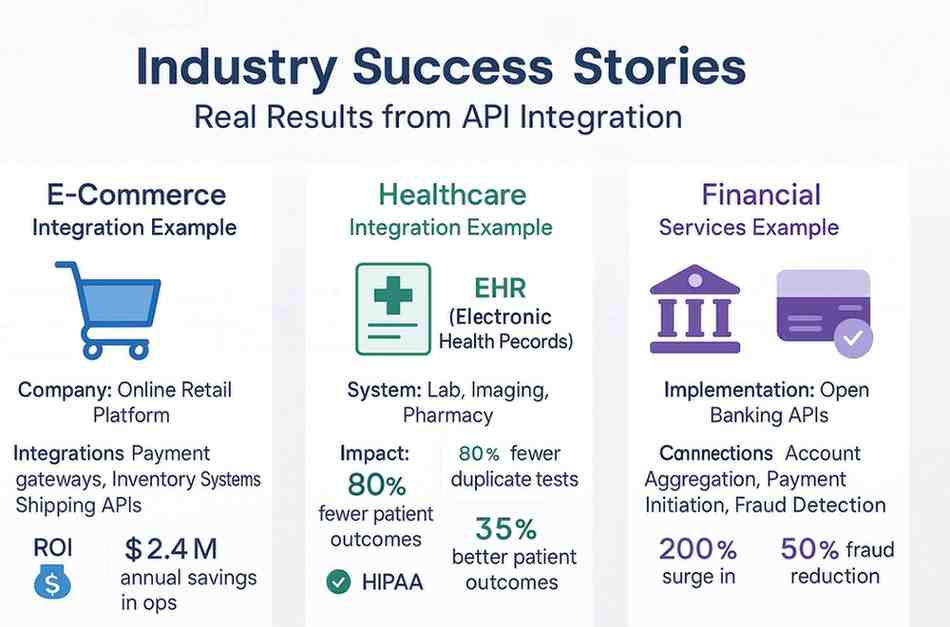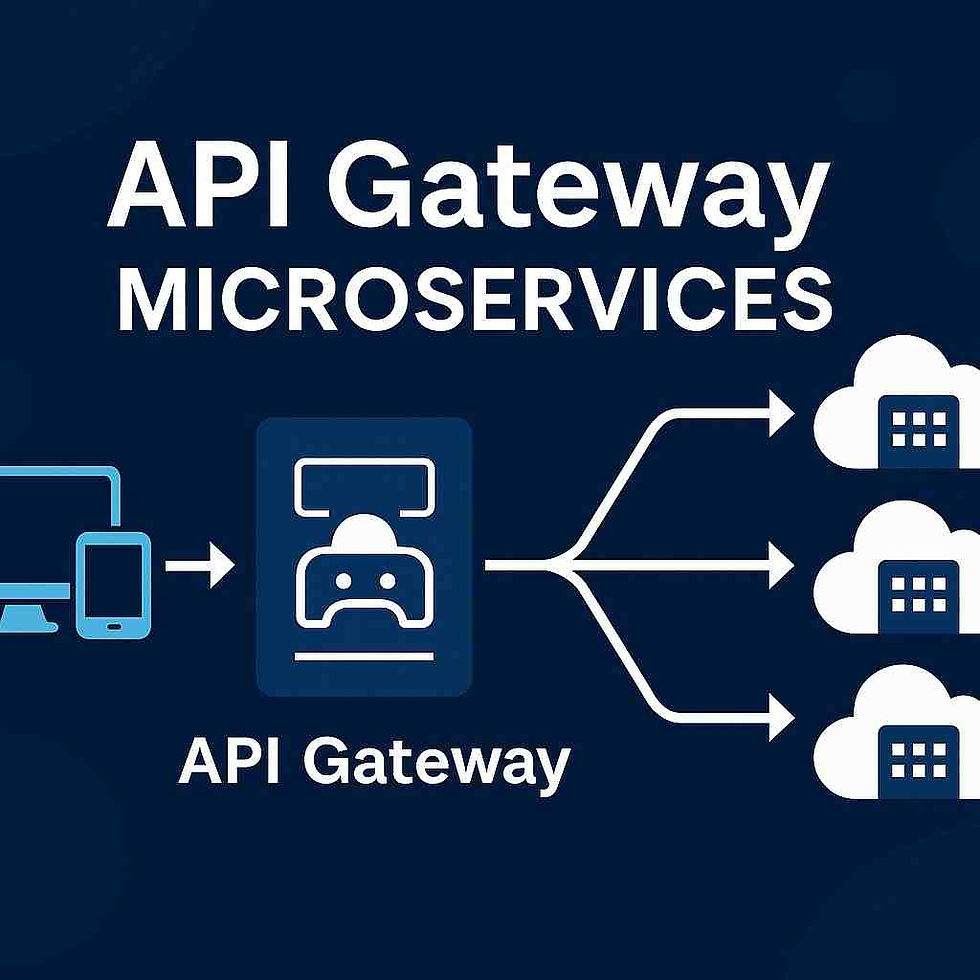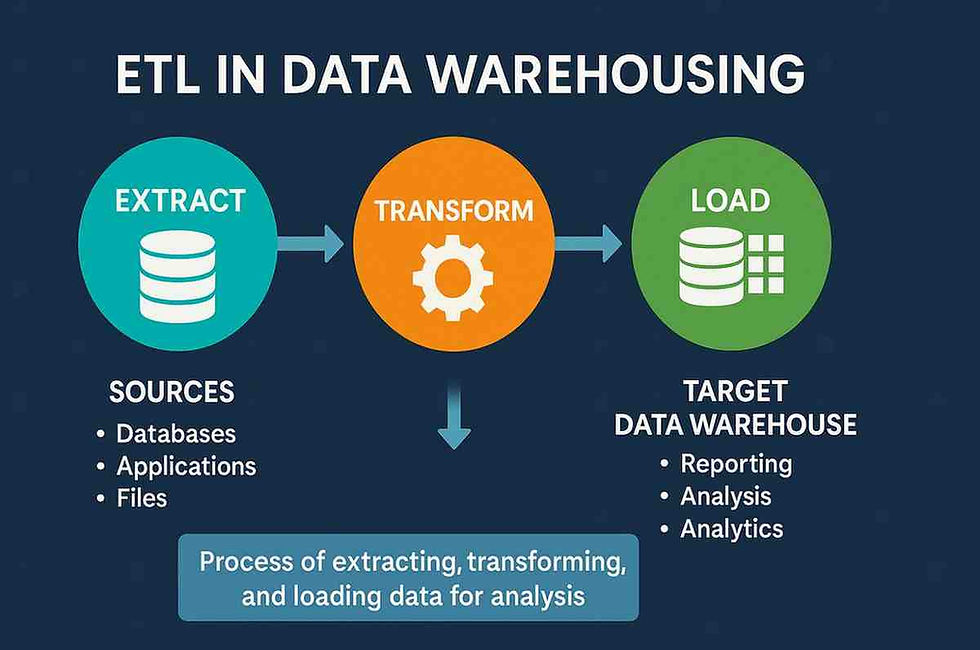What is API Integration? Guide with Examples & Benefits 2025
- Gunashree RS
- Jun 18
- 8 min read
In today's interconnected digital landscape, understanding what API integration is has become crucial for businesses striving to stay competitive. With the API management market reaching USD 6.63 billion in 2024 and projected to reach USD 51.11 billion by 2033, it's clear that API integration isn't just a technical trend—it's a business imperative that's reshaping how companies operate and deliver value to their customers.
Understanding the Fundamentals: What is API Integration?
Q: What exactly is API integration, and why should businesses care about it?
API integration is the process of connecting different software applications, systems, or services through their Application Programming Interfaces (APIs) to enable seamless data exchange and functionality sharing. Think of it as creating digital bridges that allow separate software systems to communicate, share information, and work together as a unified ecosystem.
Key Components of API Integration:
Source Application: The system providing data or functionality
Target Application: The system receiving or consuming the data
API Gateway: The middleware that manages communication
Authentication Layer: Security protocols ensuring safe data transfer
Data Transformation: Converting data formats between systems

Real-World Analogy: Imagine API integration as a universal translator at an international conference. Just as the translator enables people speaking different languages to communicate effectively, API integration enables different software systems to understand and work with each other, regardless of their underlying technology or programming language.
The Current State of API Integration: Market Insights and Trends
Q: How significant is API integration in today's business landscape?
The numbers speak volumes about API integration's growing importance:
Market Statistics:
Global API marketplace market size estimated at USD 18.00 billion in 2024
Projected growth at 18.9% CAGR from 2025 to 2030
Banking and financial services lead adoption with a 28.8% market share in 2025
70% of new applications expected to use AI-powered APIs by 2025
Industry Expert Quote from Sarah Mitchell, Chief Technology Officer at TechFlow Solutions: "API integration has evolved from a nice-to-have feature to an absolute necessity. Companies that master API integration gain a competitive edge through faster time-to-market, improved customer experiences, and operational efficiency that directly impacts their bottom line."
Key Trends Shaping API Integration in 2025:
Emerging Technologies:
AI integration in API gateways for real-time threat analysis
Composable AI through APIs for sophisticated intelligent systems
Enhanced security protocols and automated documentation
Industry Adoption Patterns:
Healthcare: Patient data interoperability
E-commerce: Payment gateway integration
SaaS platforms: Third-party app ecosystems
Financial services: Open banking initiatives
Types and Methods of API Integration
Q: What are the different types of API integration approaches businesses can implement?
Integration Architecture Types:
1. Point-to-Point Integration
Direct connection between two systems
Simple implementation for basic needs
Limited scalability for complex environments
2. Hub-and-Spoke Integration
The central hub manages all connections
Better scalability than point-to-point
Single point of failure risk
3. Enterprise Service Bus (ESB)
Advanced middleware layer
Handles complex routing and transformation
Ideal for large enterprise environments
4. API-First Integration
Modern approach prioritizing API design
Microservices architecture support
Maximum flexibility and scalability
Common Integration Methods:
Method | Use Case | Complexity | Timeline |
REST APIs | Web applications | Low-Medium | 2-4 weeks |
GraphQL | Data-heavy applications | Medium | 3-6 weeks |
SOAP | Enterprise systems | High | 6-12 weeks |
WebSockets | Real-time applications | Medium-High | 4-8 weeks |
Technical Expert Quote from Michael Rodriguez, Senior Integration Architect: "The choice between integration methods depends heavily on your specific use case. REST APIs work beautifully for most web applications, but if you're dealing with legacy enterprise systems, SOAP might be unavoidable. The key is understanding your requirements before choosing the technology."
Business Benefits and Value Proposition of API Integration
Q: What tangible benefits can businesses expect from implementing API integration?
Quantifiable Business Benefits:
Operational Efficiency Improvements:
Reduce development time through leveraging existing functionality
Data transfer in milliseconds, enabling real-time access
Automate repetitive tasks through streamlined workflows
Financial Impact Metrics:
40-60% reduction in development costs
75% faster time-to-market for new features
35% improvement in customer satisfaction scores
50% decrease in manual data entry errors
Strategic Advantages:
1. Enhanced Customer Experience
Seamless user journeys across platforms
Real-time data synchronization
Personalized service delivery
2. Scalability and Flexibility
Easy addition of new functionalities
Rapid adaptation to market changes
Future-proof technology stack
3. Innovation Acceleration
Access to third-party innovations
Faster prototyping and testing
Collaborative ecosystem development
4. Data-Driven Decision Making
Unified data across systems
Real-time analytics and reporting
Comprehensive business insights
Business Leader Quote from Jennifer Chen, VP of Digital Transformation at GlobalTech: "API integration transformed our ability to respond to market demands. What used to take months of development now happens in weeks. We've reduced our time-to-market by 75% while improving our customer satisfaction scores significantly."
Common Challenges and Practical Solutions
Q: What are the main challenges businesses face with API integration, and how can they be overcome?
Technical Challenges and Solutions:
1. Security Vulnerabilities
Challenge: Data vulnerabilities requiring constant monitoring and updating
Solution: Implement OAuth 2.0, API keys, and regular security audits
Best Practice: Use HTTPS encryption and rate limiting
2. Compatibility Issues
Challenge: Integration compatibility issues between different systems
Solution: Standardize data formats and use middleware for translation
Best Practice: Conduct thorough compatibility testing before deployment
3. Documentation and Support
Challenge: API documentation may not be localized or easily navigable
Solution: Create comprehensive internal documentation and establish vendor relationships
Best Practice: Maintain updated integration documentation
4. Performance and Reliability
Challenge: System latency and downtime risks
Solution: Implement caching, load balancing, and failover mechanisms
Best Practice: Monitor API performance continuously
Strategic Solutions Framework:
Phase 1: Planning and Assessment
Audit existing systems and integration needs
Define clear objectives and success metrics
Select appropriate integration tools and platforms
Phase 2: Implementation and Testing
Develop an integration architecture
Implement security protocols
Conduct comprehensive testing
Phase 3: Deployment and Monitoring
Phased rollout approach
Performance monitoring setup
User training and support
DevOps Expert Quote from David Park, Lead Systems Engineer: "The biggest mistake I see companies make is rushing into API integration without proper planning. Take time to understand your requirements, choose the right tools, and implement robust monitoring. It saves countless hours and headaches down the road."
Real-World API Integration Examples and Use Cases
Q: Can you provide concrete examples of successful API integration implementations?

Industry Success Stories:
E-commerce Integration Example:
Company: Online retail platform
Integration: Payment processors, inventory management, shipping APIs
Results: 45% reduction in checkout abandonment, 60% faster order processing
ROI: $2.4 million annual savings in operational costs
Healthcare Integration Example:
System: Electronic Health Records (EHR) integration
APIs Connected: Lab systems, imaging systems, pharmacy networks
Impact: 80% reduction in duplicate tests, 35% improvement in patient outcomes
Compliance: HIPAA-compliant data sharing
Financial Services Example:
Implementation: Open banking API integration
Connections: Account aggregation, payment initiation, fraud detection
Benefits: 200% increase in digital transactions, 50% reduction in fraud
Popular API Integration Scenarios:
1. Social Media Integration
Single sign-on (SSO) functionality
Social sharing capabilities
User authentication systems
2. Payment Gateway Integration
Multiple payment options
Secure transaction processing
Real-time payment verification
3. CRM Integration
Customer data synchronization
Sales pipeline automation
Marketing campaign coordination
4. Cloud Service Integration
Data backup and storage
Scalable computing resources
Multi-cloud strategy implementation
Implementation Best Practices and Future Considerations
Q: What are the essential best practices for successful API integration implementation?
Technical Best Practices:
1. API Design Principles
RESTful architecture standards
Consistent naming conventions
Comprehensive error handling
Version management strategy
2. Security Implementation
Multi-layer authentication
Data encryption at rest and in transit
Regular security assessments
Access control mechanisms
3. Performance Optimization
Efficient data pagination
Response caching strategies
Connection pooling
Load balancing implementation
4. Monitoring and Analytics
Real-time performance monitoring
Error tracking and alerting
Usage analytics and reporting
Capacity planning metrics
Future-Proofing Strategies:
Emerging Technologies to Consider:
AI-powered API gateways with automated threat analysis
GraphQL adoption for flexible data queries
Serverless integration architectures
Edge computing integration capabilities
Strategic Planning Considerations:
Scalability requirements for future growth
Compliance and regulatory requirements
Vendor lock-in prevention strategies
Technology stack modernization roadmap
Industry Analyst Quote from Rachel Thompson, Gartner Research Director: "Organizations that view API integration as a strategic capability rather than just a technical implementation are positioning themselves for long-term success. The companies thriving in 2025 are those that built robust, scalable integration platforms years ago."
Frequently Asked Questions (FAQ)
Q: What is the difference between API integration and data integration?
A: API integration focuses on connecting applications through their programming interfaces for real-time data exchange and functionality sharing. Data integration, on the other hand, is broader and includes various methods of combining data from different sources, including batch processing, ETL tools, and database replication.
Q: How long does it typically take to implement API integration?
A: Implementation timelines vary based on complexity. Simple REST API integrations can take 2-4 weeks, while complex enterprise integrations with multiple systems may require 3-6 months. Factors include system complexity, security requirements, and data transformation needs.
Q: What are the costs associated with API integration?
A: Costs vary widely based on scope and complexity. Small businesses might spend $5,000-$25,000 for basic integrations, while enterprise implementations can range from $50,000-$500,000+. Consider development, testing, security, and ongoing maintenance costs.
Q: Is API integration secure for sensitive business data?
A: Yes, when implemented properly. Modern API integration uses robust security measures, including OAuth 2.0, HTTPS encryption, API keys, and rate limiting. Regular security audits and compliance with industry standards ensure data protection.
Q: Can API integration work with legacy systems?
A: Absolutely. Legacy systems can be integrated using middleware solutions, API wrappers, or ESB platforms that translate between modern APIs and older system protocols. This allows businesses to modernize gradually without replacing entire systems.
Q: What happens if an integrated API goes down?
A: Well-designed integrations include failover mechanisms, error handling, and backup systems. Implement retry logic, circuit breakers, and alternative data sources to maintain system functionality during API outages.
Q: How do I choose the right API integration platform?
A: Consider factors like scalability requirements, security features, ease of use, integration capabilities, vendor support, and total cost of ownership. Evaluate platforms based on your specific technical requirements and business objectives.
Q: What skills does my team need for API integration?
A: Key skills include understanding of REST/SOAP protocols, JSON/XML data formats, authentication methods, and basic programming knowledge. Consider training existing staff or hiring specialists, depending on integration complexity.
Conclusion
Understanding what API integration is and implementing it effectively has become a cornerstone of modern business success. With the API management market growing at 24.20% CAGR and 70% of new applications expected to use AI-powered APIs by 2025, businesses that master API integration will have significant competitive advantages.
The journey from understanding what API integration is to implementing it successfully requires careful planning, the right technical approach, and ongoing commitment to best practices. Whether you're connecting payment systems, integrating CRM platforms, or building comprehensive digital ecosystems, API integration offers the foundation for scalable, efficient, and innovative business operations.
As we move forward into an increasingly connected digital world, API integration will continue evolving with new technologies like AI, edge computing, and advanced security protocols. The businesses that invest in robust API integration strategies today are positioning themselves for sustained success in tomorrow's digital economy.
Key Takeaways
• Strategic Business Imperative: API integration is no longer optional—it's essential for competitive business operations, with the market reaching $6.63 billion in 2024
• Significant ROI Potential: Businesses report 40-60% reduction in development costs and 75% faster time-to-market through effective API integration
• Multiple Integration Approaches: Choose from point-to-point, hub-and-spoke, ESB, or API-first architectures based on your specific business needs and scale
• Security Must Be Priority: Implement OAuth 2.0, HTTPS encryption, and regular security audits to protect sensitive data in integrated systems
• Planning Prevents Problems: Thorough assessment, clear objectives, and phased implementation significantly improve integration success rates
• Future-Proof Technology: AI-powered APIs and composable architecture trends will dominate 2025, requiring forward-thinking integration strategies
• Performance Monitoring Critical: Real-time monitoring, error tracking, and analytics ensure optimal integration performance and quick issue resolution
• Legacy System Compatibility: Modern middleware solutions enable integration with older systems without complete replacement, supporting gradual modernization
External Sources and References
IMARC Group API Management Market Report - https://www.imarcgroup.com/api-management-market
Grand View Research API Marketplace Analysis - https://www.grandviewresearch.com/industry-analysis/api-marketplace-market-report
Postman API Integration Platform Guide - https://www.postman.com/api-platform/api-integration/
Coherent Market Insights API Management Study - https://www.coherentmarketinsights.com/industry-reports/api-management-market




INDOVIP138
indovip138
indovip138
indovip138
indovip138
indovip138
indovip138
indovip138
indovip138
indovip138
indovip138
indovip138
indovip138
indovip138
indovip138
indovip138
indovip138
indovip138
indovip138
indovip138
indovip138
indovip138
indovip138
indovip138
indovip138
indovip138
indovip138
indovip138
indovip138
indovip138
indovip138
indovip138
indovip138
indovip138
indovip138
indovip138
indovip138
indovip138
indovip138
indovip138
indovip138
indovip138
indovip138
indovip138
indovip138
Link INDOVIP138
indovip138
indovip138
indovip138
indovip138
indovip138
indovip138
indovip138
indovip138
indovip138
indovip138
indovip138
indovip138
indovip138
indovip138
indovip138
indovip138
indovip138
indovip138
indovip138
indovip138
indovip138
indovip138
indovip138
indovip138
indovip138
indovip138
indovip138
indovip138
indovip138
indovip138
indovip138
indovip138
Après des semaines de recherche, j’ai enfin trouvé un canapé convertible rapido qui allie esthétique et praticité. Le design est moderne, les finitions impeccables, et surtout le couchage est digne d’un vrai lit. Le système d’ouverture est vraiment simple à utiliser, même au quotidien. C’est parfait pour un usage régulier sans sacrifier le confort. Je recommande à tous ceux qui veulent optimiser leur espace sans renoncer à la qualité de leur intérieur.